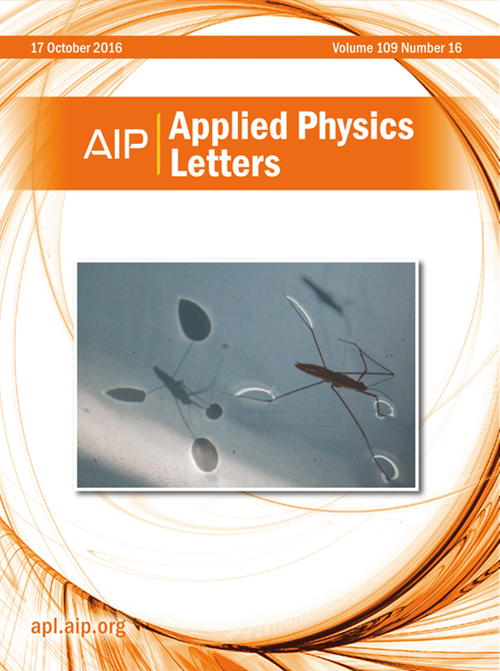分析了大容量Cr8O21作为锂离子电池正极材料的容量衰减机理
IF 3.5
2区 物理与天体物理
Q2 PHYSICS, APPLIED
引用次数: 0
摘要
由于缺乏可靠的证据,Cr8O21的容量衰减机制尚不清楚。为了阐明容量损失的来源,我们利用第一性原理计算研究了锂化Cr8O21 (LixCr8O21)的结构、结构演化过程和相变。一方面,我们发现LixCr8O21在低锂含量时呈夹层结构,而在高锂含量时呈岩盐状结构。与三明治状LixCr8O21相比,岩盐状LixCr8O21具有更小的体积,因此具有更少的间隙Li位点。类似岩盐的LixCr8O21结构最大可存储14li,而夹层结构的容量小于4li。因此,这种由三明治状变为岩盐状的结构变化是Cr8O21在放电过程中容量损失的原因之一。另一方面,凸包图和相图表明,类岩盐LixCr8O21在热力学上是不稳定的,在第一次放电时,部分LixCr8O21转化为活性LiCrO2。然而,在随后的充电过程中,LiCrO2被转化为cr2,而不是Cr8O21。这种不可逆的相变(放电过程中Cr8O21→LiCrO2,充电过程中LiCrO2→CrO2)是导致Cr8O21容量损失的另一个重要原因。该研究为Cr8O21的急剧容量衰减提供了关键的理论依据,从而促进了未来锂离子电池高容量阴极的发展。本文章由计算机程序翻译,如有差异,请以英文原文为准。
Analyzing the capacity fading mechanism in high-capacity Cr8O21 as a cathode material for Li-ion batteries
The capacity fading mechanism of Cr8O21 remains unclear owing to the lack of reliable evidence. To elucidate the source of capacity loss, we investigated the structures, the structural evolution process, and phase transitions of lithiated Cr8O21 (LixCr8O21) using first-principles calculations. On the one hand, we found that LixCr8O21 adopts a sandwich structure at low Li content but exhibits a rock salt-like structure at high Li content. Compared to the sandwich-like LixCr8O21, the rock salt-like LixCr8O21 possesses a reduced volume and, therefore, decreased interstitial Li sites. The rock salt-like LixCr8O21 structure can maximally store 14 Li, less than 4 Li compared to the sandwich structure. Therefore, this structural change from sandwich-like into rock salt-like is a reason for the capacity loss in Cr8O21 in the discharge process. On the other hand, the convex hull and phase diagram demonstrate that the rock salt-like LixCr8O21 is thermodynamically unstable, and a portion of it transforms into active LiCrO2 during the first discharge. However, LiCrO2 is then converted into CrO2, rather than Cr8O21 in the subsequent charge process. This irreversible phase transition (Cr8O21 → LiCrO2 in the discharge process and LiCrO2 → CrO2 in the charge process) is another significant cause for the capacity loss in Cr8O21. This study provides key theoretical evidence for the drastic capacity fading in Cr8O21 and thereby facilitates the future development of high-capacity cathodes for lithium-ion batteries.
求助全文
通过发布文献求助,成功后即可免费获取论文全文。
去求助
来源期刊

Applied Physics Letters
物理-物理:应用
CiteScore
6.40
自引率
10.00%
发文量
1821
审稿时长
1.6 months
期刊介绍:
Applied Physics Letters (APL) features concise, up-to-date reports on significant new findings in applied physics. Emphasizing rapid dissemination of key data and new physical insights, APL offers prompt publication of new experimental and theoretical papers reporting applications of physics phenomena to all branches of science, engineering, and modern technology.
In addition to regular articles, the journal also publishes invited Fast Track, Perspectives, and in-depth Editorials which report on cutting-edge areas in applied physics.
APL Perspectives are forward-looking invited letters which highlight recent developments or discoveries. Emphasis is placed on very recent developments, potentially disruptive technologies, open questions and possible solutions. They also include a mini-roadmap detailing where the community should direct efforts in order for the phenomena to be viable for application and the challenges associated with meeting that performance threshold. Perspectives are characterized by personal viewpoints and opinions of recognized experts in the field.
Fast Track articles are invited original research articles that report results that are particularly novel and important or provide a significant advancement in an emerging field. Because of the urgency and scientific importance of the work, the peer review process is accelerated. If, during the review process, it becomes apparent that the paper does not meet the Fast Track criterion, it is returned to a normal track.
 求助内容:
求助内容: 应助结果提醒方式:
应助结果提醒方式:


